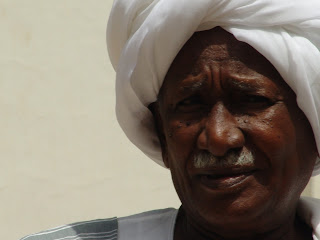My favourite National Congress Party (NCP) wisdom of the last few days is Nafie Ali Nafie’s statement that the NCP regime in Khartoum is immune to the influenza of popular revolts in its immediate neighbourhood, Egypt and Libya, because it has never sided with the West against the aspirations of its people. According to Nafie, the Egyptians ousted Mubarak because of his warm relationships with Israel and the US, while the NCP has always provided full support for the Palestinian struggle, the central theme of Arab liberation. Regarding the situation in Libya the Sudanese foreign ministry urged Ghadafi to exercise self-restraint and refrain from the use of force against the Libyan people. The NCP media outlets, al-Intibaha included, repeated on a daily basis Ghadafi’s Sudan sins, paradoxically all but one involved the Islamic Movement.
During Nimayri’s reign Libya provided the oppositional National Front, essentially an alliance between the Islamic Movement and the Umma Party, with military training and arms, an effort that culminated in the unsuccessful July 1976 attack on the Sudanese capital. Ghadafi’s frustration with Nimayri had more to do with the latter’s relationship with Egypt’s Sadat than with the internal politics of Sudan. Notably, Ghadafi employed the network of fighters recruited with the help of the National Front from Darfur in his subsequent confrontations with Chad starting in 1978.
As part of his souring grudge against Nimayri Ghadafi provided the Sudan Peoples’ Liberation Army (SPLA) led by John Garang with financial and military support during its formative years prior to Nimayri’s demise by popular revolt in 1985.
Following its 1989 coup the Islamic Movement courted Ghadafi with utmost loyalty, and even modelled its initial experimentation with political structures after Ghadafi’s system of popular committees and conferences. In one such theatrical scene Ghadafi was invited to inaugurate the demolition of the notorious colonially built Cooper Prison in Khartoum North. Ghadafi flanked by Turabi and Bashir oversaw the demolition of a portion of the prison’s external wall. The three then ranted volumes against the oppressive legacy of colonialism. Ghadafi returned home and the prison’s wall got the repairs it deserves, and it still stands serving the needs of post-colonial security. Two things changed though but did not really catch on. The Cooper Prison was renamed the Central Prison and the neighbourhood in its vicinity that goes by the same name was rechristened Omer al-Mukhtar after the Libyan anti-colonial hero.
The NCP suffered Ghadafi’s support of the Darfur movements in silence. When al-Intibaha charged against the Libyan leader accusing him of supporting the Justice and Equality Movement (JEM) attack on the capital in May 2008 and decrying his refusal to hand over JEM’s chief, Khalil Ibrahim, to the Sudanese government the security authorities blocked the publication of the paper.
All that said it would be amusing to see, in case Ghadafi does fall, what name the NCP will invent for Burj el-Fatih (the first of September tower), the Libyan egg-shaped complex that carries the name of Ghadafi’ revolution which dominates Khartoum’s skyline and generously serves the delicate culinary and accommodation needs of its NGO population.





No comments:
Post a Comment